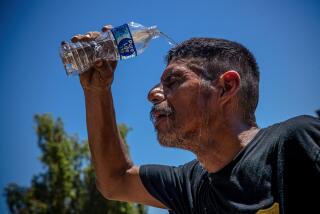California, climate change and the trauma of the last decade
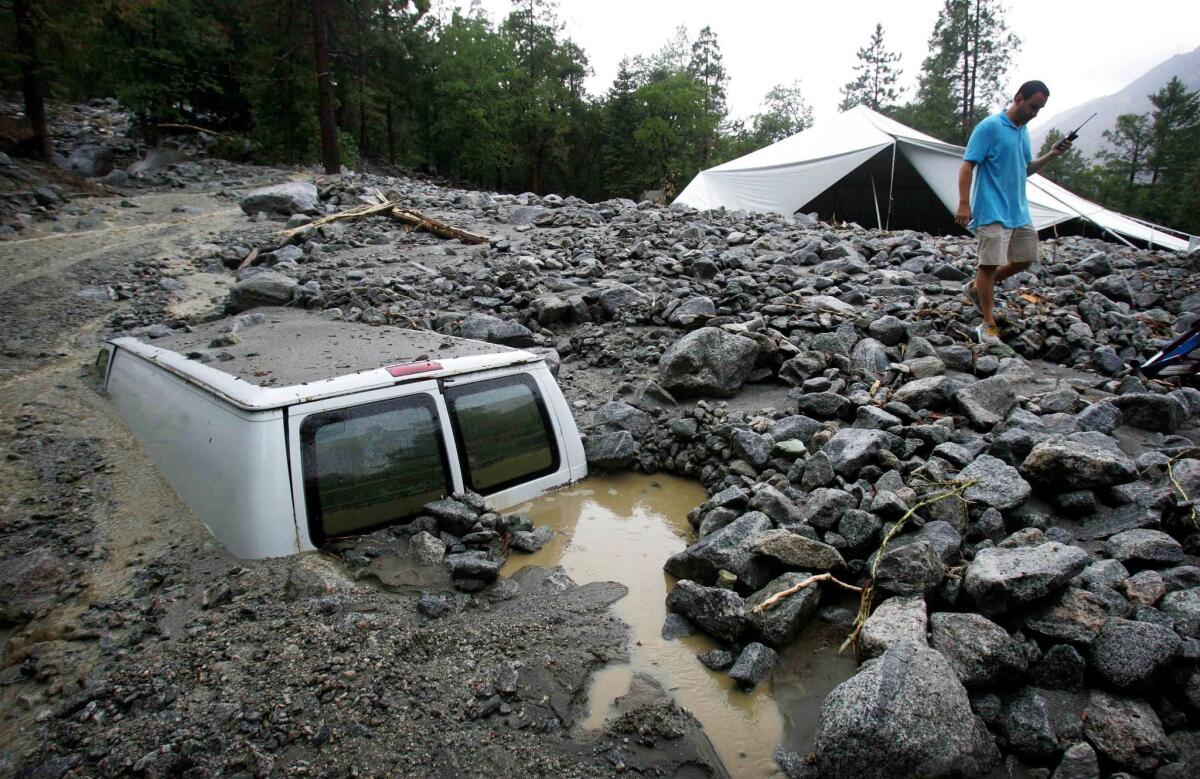
- Share via
The wildfires were more destructive. The drought was the longest on record. And the storms, when they finally came, unleashed more water than our dams could contain.
To live in California over the last decade has meant enduring a steady procession of weather-related disasters, each one seemingly worse than the last.
Five of the 10 largest fires in state record books have occurred since 2010. So has California’s third driest year since 1895, as well as its third wettest year since 1895, according to the Western Regional Climate Center. In 2015, the Sierra snowpack — the source of one-third of the state’s fresh water — reached its lowest level in 500 years.
In years past, we might have attributed these events to a string of bad luck. But now they stir up a sinking sense of dread.
This is climate change, we tell ourselves — the payback for pumping carbon dioxide into the atmosphere for more than a century.
We fear the natural disasters that have always been part of life in California will only get worse. And we wonder: How long can we remain in the state that we love?
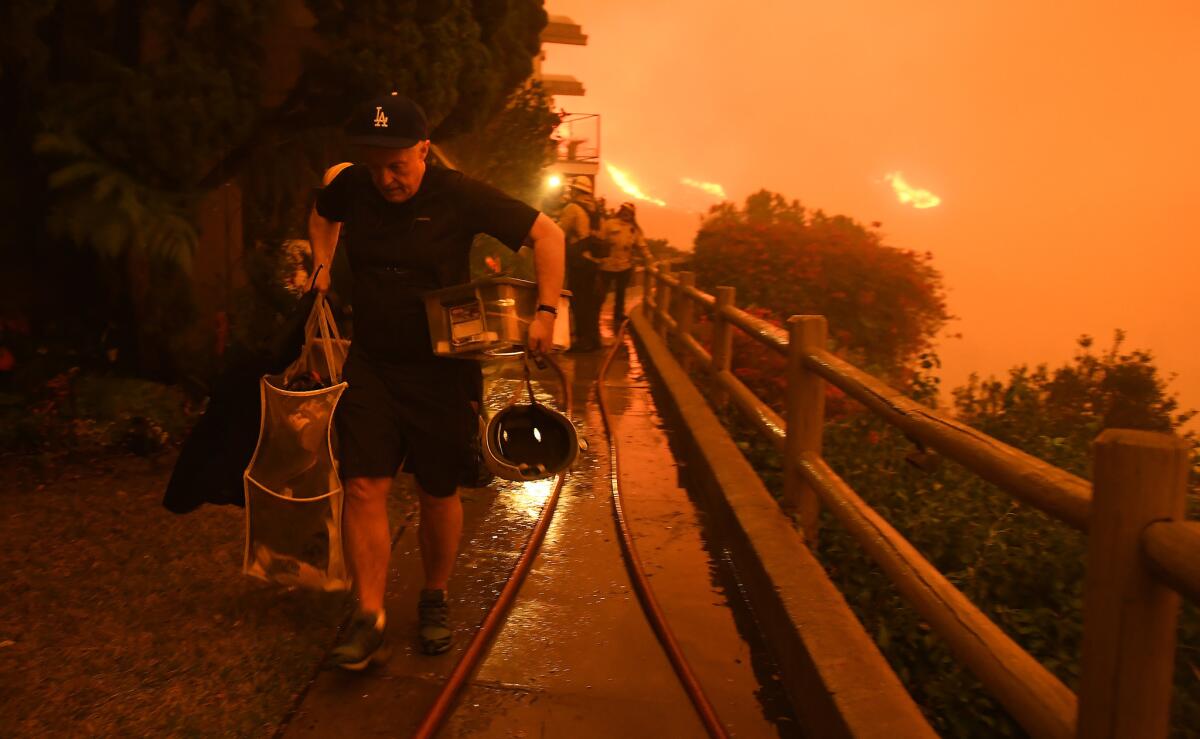
Scientists say there’s no doubt that climate change has amplified the extreme events of the last decade, mostly because the state’s average temperature is rising.
California as a whole has warmed by 1 to 2 degrees Fahrenheit since the beginning of the 20th century, according to the state’s Natural Resources Agency. The U.S. Environmental Protection Agency says Southern California is about 3 degrees hotter than it was 100 years ago.
This warming cannot cause California’s droughts, fires and storms on its own, but it does boost their effects.
“Just like how wet clothes will dry out faster if your house is warm, soil and vegetation do the same thing,” said A. Park Williams, an environmental scientist at Columbia University’s Lamont-Doherty Earth Observatory.
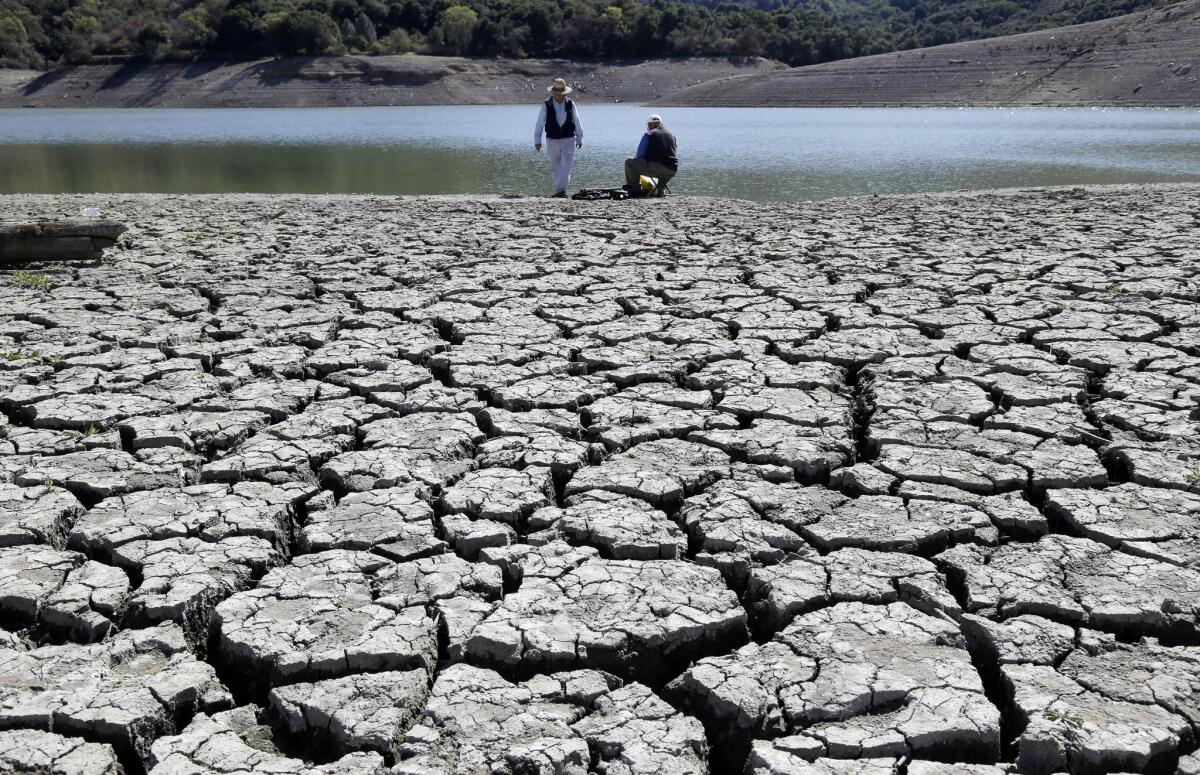
Williams has studied the early years of the drought that parched California for most of the last decade. His research team determined that the warming effect of climate change could account for 15% of the drought’s severity, while the rest could be chalked up to the state’s natural rain variability.
“The drought that occurred this decade would still have been a severe drought, even without the background warming,” he said.
The same is true for fires and coastal storms, said Lesley Ewing, a senior engineer with the California Coastal Commission.
“I like to use the steroid analogy,” she said. “Top athletes who use steroids are still great athletes — the steroids just give them a little push. Storms and fires already have the potential to do horrible damage, but climate change gives them an added push.”
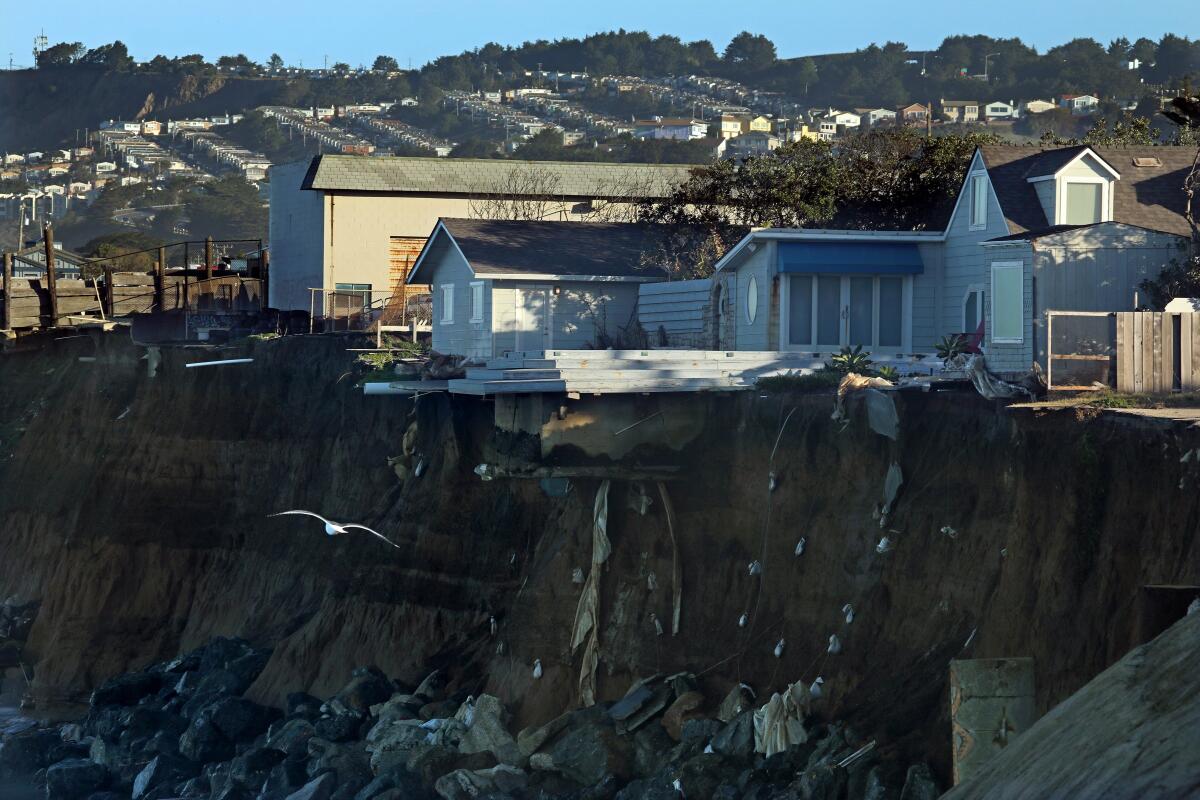
Indeed, scientists say the run-of-the-mill volatility of California weather is to blame for most of the decade’s disasters.
Jay Lund, director of the Center for Watershed Sciences at UC Davis, said the swings between precipitation highs and lows have always been more pronounced in California than in any other state in the continental U.S., and in Southern California they’re even bigger.
“We have more droughts and floods per decade than any other part of the country, and that’s our normal climate,” he said.
Development and population growth have also amped up the effects of our natural disasters. More people means more potential for more human-caused fires, and when more homes are erected in the urban-wildland interface, the blazes feel more apocalyptic than ever before.
For example, Scott Stephens, a fire ecologist at UC Berkeley, noted that the 1981 Atlas Peak fire charred approximately 23,000 acres and destroyed a total of 65 houses in and around Napa. The 2017 Atlas fire burned about twice as many acres in the same general area, but that time 781 homes went up in flames.
“I still feel no doubt that climate change is impacting wildfire in the state, but there are other issues too,” Stephens said.
Our culture of round-the-clock news, push alerts and viral social media posts is upping our anxiety as well.
“I think there is a general sense of crisis about everything right now, and that has a compounding effect,” said Alex Hall, director of the Center for Climate Science at UCLA.
If you’re worried that things will only get worse, you’re not exactly wrong.
By 2100, the state’s average temperature could be 5.6 to 8.8 degrees Fahrenheit higher than it was in the early 1900s, depending on how good a job the world does of limiting greenhouse gas emissions, the Natural Resources Agency says. And that will have further consequences for drought, fire and storms.
“The modeling shows us that we’ll see more extreme events happening more frequently,” said Nina Oakley, an atmospheric scientist at the Desert Research Institute.
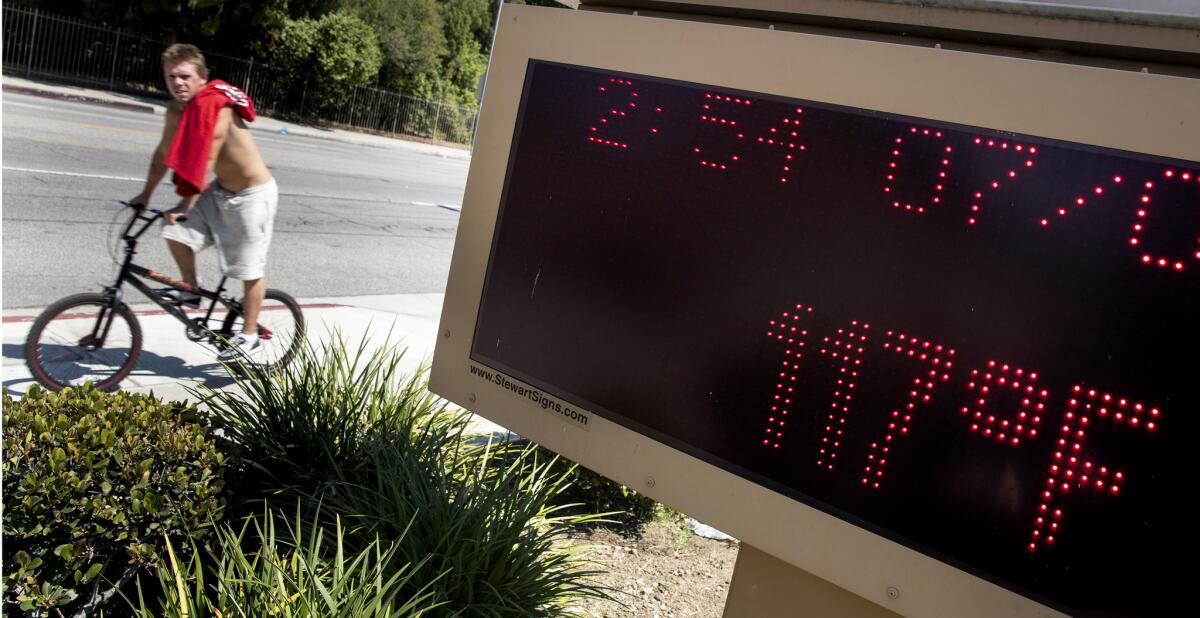
Climate change simulations for California show more precipitation in wet years and deeper droughts in dry years, Hall said. And according to the models, he added, we are just now on the precipice of seeing those changes play out.
If that leaves you feeling more terrified than ever, consider this: Experts say there is plenty we can do to respond and adapt.
Prescribed burning and other fuel-reduction strategies would make an enormous difference in minimizing the size of forest wildfires, even in a warmer world, Stephens said. Making sure vulnerable communities have fire plans in place that include checking on elderly or immobile residents would also reduce the death toll in a blaze.
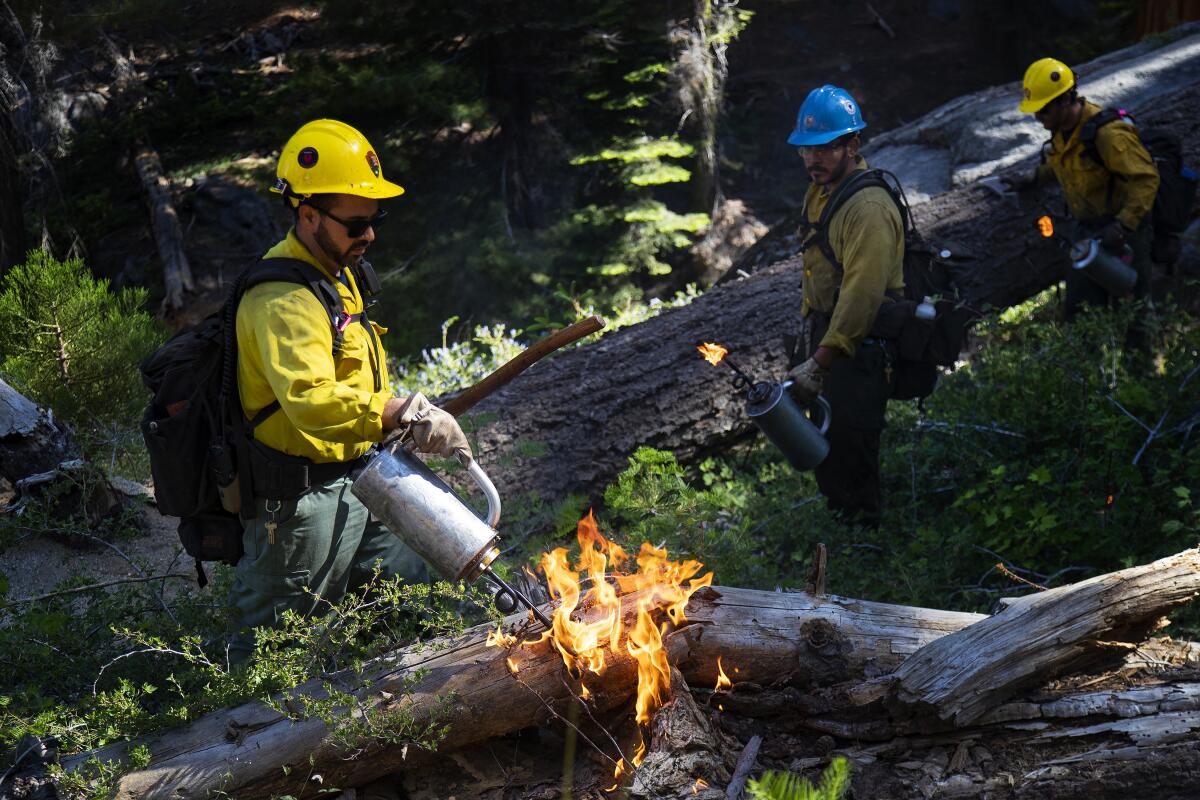
The state’s weather patterns have forced residents to come up with ways to cope with long, dry summers and occasional flooding in the winter, Lund said.
“The nice thing about California is that we are already well-organized for a highly variable climate,” he said.
Although climate change will probably make living in California more challenging than ever, Hall said that in his professional opinion, it’s still a good place to be.
“There are a lot of capable and creative people here, and I think in that sense it is a great laboratory to address these deep sustainability issues,” he said.
So if climate change has you feeling anxious and scared, that’s OK. Just try not to freak out. It won’t help us solve anything.
“One thing I realized in the course of the drought is that we do a terrible job when we are complacent and when we panic,” Lund said. “There has to be a way in the middle, and that’s where we want to be.”


